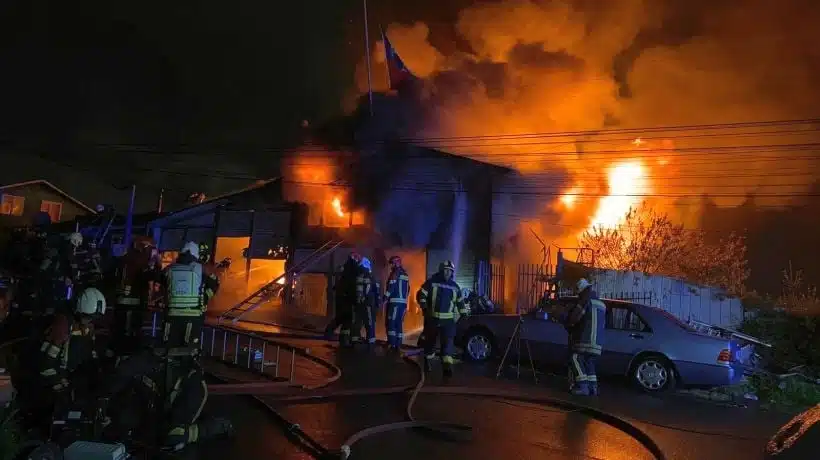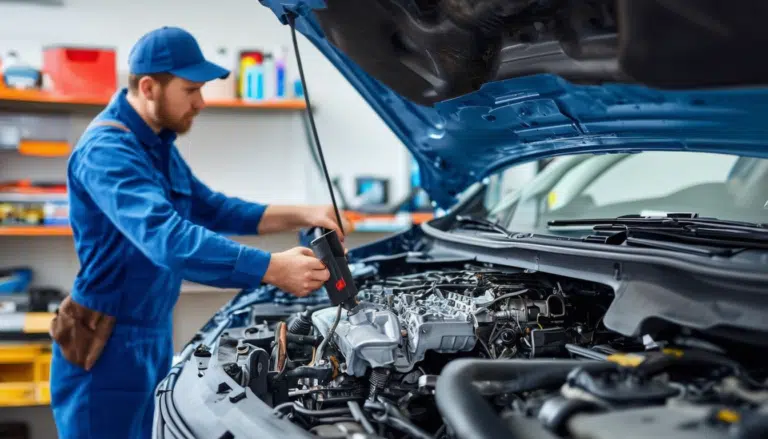« The main fire goes out »: in Donges, a mechanical workshop completely consumed by flames

A tragic event took place in Donges, where a mechanic workshop was consumed by a devastating fire. This incident has not only had a significant impact on the workshop owners but has also raised concerns about safety in mechanic workshops overall. The nature of the fire, the causes, and the prevention measures are topics that need to be analyzed in greater depth to prevent similar tragedies from occurring in the future. The importance of understanding the associated risks and protection measures – such as the use of appropriate fire extinguishers and space compartition – cannot be underestimated in this discussion.
The nature of fire in mechanic workshops
Fires in mechanic workshops can be classified in various ways, with Class E being the one primarily arising from electrical short circuits. In a fire of this nature, it is crucial to cut off the electrical current immediately. If the fire is allowed to spread, it can turn into a class A, B, or D fire, depending on the materials present in the workshop. In this context, it is significant to mention that the most common fires in mechanic workshops are class B and C.
In the event of a fire, it is essential to identify the different classes and the recommended extinguishers. For class B and C fires, CO2 (carbon dioxide) or carbon snow extinguishers are the most effective options. However, operating extinguishers is only helpful if one has the necessary training and knowledge. Lack of preparation and inadequate safety conditions can lead to greater disasters.
Fires and short circuits
The report of a fire in a mechanic workshop in Zaragoza illustrates the severity of such incidents. This fire was declared due to a short circuit and the spillage of flammable liquids, leading to the destruction of several vehicles and substantial damages to nearby properties. Controlling such a fire is not just about putting out the flames but understanding the root of the problem and how to prevent it from happening again.
The subsequent investigation revealed that the lack of cleaning in the workshop had contributed to the spread of the flames. The combination of poorly maintained electrical tools and flammable products can be lethal. Therefore, it is vital that workshop owners and employees take a proactive approach to safety and cleanliness.
Fire prevention measures
Prevention is fundamental to avoiding fires in mechanic workshops. Identifying accident risks and establishing clear measures to prevent them can make a significant difference. For example, keeping the workspace clear and free of obstacles is crucial. Slips and falls are two of the most common accidents that occur in disorganized spaces.
Compartition involves dividing the workshop into sectors using construction materials with adequate fire resistance. This practice helps confine a fire to a specific area and prevent its spread. When implementing safety measures, fire regulations must be strictly adhered to ensure the protection of not only the workers but also the surrounding properties.
Use of extinguishers
The proper use of extinguishers is vital in fire management. All personnel should be trained in their use and in the appropriate type of extinguisher for each situation. In a fire, the location of the fire must be identified immediately, and the electrical disconnection system should be activated to prevent additional short circuits.
The practices of cooling the affected area are crucial after extinguishing the fire. Once the flames are out, it is advisable to check for any possibilities of reignition and ensure that all areas are effectively cooled. Actions like these can save lives and minimize structural damage.
Recent cases of fires in mechanic workshops
Recent news has reported numerous incidents related to fires in mechanic workshops. For example, a fire in Ate caused millions in losses, destroying several vehicles and endangering workers. In this case, the causes were similar: electrical problems and lack of maintenance on equipment.
The situation in electrical workshops is equally concerning. A workshop in O Temple, Cambre, also suffered a fire that necessitated the massive mobilization of emergency services. The speed of response is essential, but so is preparation before the incident. Creating an action plan is one of the most effective measures that can be implemented.
The post-fire analysis
Once a fire has been controlled, it is crucial to conduct a post-fire analysis. This involves examining all affected structures and determining the cause of the fire. Many times, fires in mechanic workshops are preventable if regular inspections are carried out and safety regulations are followed.
The implementation of a regular inspection system for electrical equipment, cleaning and organization of the workshop, along with training for all staff, are some of the steps that can be taken to mitigate the risk of future fires. It is important for workshop management to take safety seriously as a daily priority.
Conclusions about safety in mechanic workshops
The alarming frequency of fires in mechanic workshops highlights the need to establish a solid safety culture. The combination of proper training, equipment maintenance, and the incorporation of rigorous regulations can be the key to preventing tragedies. Furthermore, raising awareness of the dangers associated with working in a mechanic workshop is imperative for the well-being of all involved.
Therefore, ensuring a safe working environment not only protects these spaces but also safeguards the life and well-being of workers. By implementing improved safety procedures and preventive strategies, one can contribute to reducing risks in the workplace.




